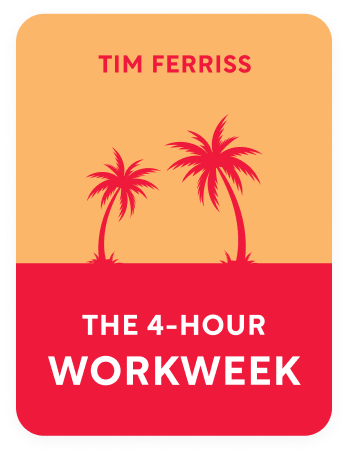

This article is an excerpt from the Shortform book guide to "The 4-Hour Workweek" by Tim Ferriss. Shortform has the world's best summaries and analyses of books you should be reading.
Like this article? Sign up for a free trial here .
Should you automate your business? What are the benefits of automating, and how do you accomplish it?
In The 4-Hour Workweek, Tim Ferriss describes why you should automate your business and the steps for how to do it. By automating, you’ll cut out a lot of work.
Read more about how to automate your business processes and free up more of your time.
Automate Your Business
In The 4-Hour Workweek, Tim Ferris talks about automating your muse in order to help you automate your business. From the moment you start planning your muse, imagine how it’s going to run itself without you. Your systems need to be scalable, i.e., when your business starts getting more orders, it must be able to handle the demand. Most entrepreneurs start out by doing most of the work themselves, which is what you’re going to do, too, but the key to automation is knowing when to tap out. Keep in mind that the process of learning to automate your business is a long one. Read on for ways to automate your business.
Phases of Automation
There are three phases of automation, determined by the amount of product shipped. These are the ways to automate your business;
Phase #1: 0-50 Units Total
Initially, you’ll do everything yourself. As you work through this phase:
- Take orders and answer questions. This will help you figure out the most common questions so you can put together a FAQ and create training materials for others once you bring them on.
- Revise your ads and website if necessary. If you’re getting orders or questions from customers who don’t actually want what you’re selling or are taking up a lot of your time, be clearer about what you’re selling and they won’t approach you in the first place.
- Pack and ship all the products. Figure out how to do both most economically.
- Research opening a merchant account from your local small bank.
- In addition to the usual stats, track cost-per-order (CPO), which includes everything from advertising to returns. If something’s important, track it.
Shortform Extended Example—Edgar: Edgar sets up a merchant account at his bank and orders 20 Amsterdam hats. He sells them via his website and answers customer questions via email and phone. He revises one of his ads.
Shortform Extended Example—Devi: Devi sets up a Yahoo store. She sends out her newsletter to everyone who signed up and asks them what they’d like to see on a DVD. After getting feedback, she makes the DVD and opens her web store. Some of the people who signed up for the newsletter buy DVDs.
Phase #2: Fewer Than 10 Units Per Week
In this phase, you’re going to add a local fulfillment company to help automate your business processes. As you work through this phase:
- Maintain or increase advertising.
- Add the FAQ to your website and keep collecting questions and answers.
- Order more product when you need it, but don’t order in large quantities until the product is perfect. It might be cheaper to bulk order, but it’s better to order fewer products and test first. If there’s a problem, you don’t want 1,000 versions of it.
- Find a local fulfillment company. It’s going to be easier to negotiate with companies that are small and need business. You want to find a company that will meet the following criteria:
- No set-up fees or monthly minimums. If you can’t get this, ask for half off both and ask that your setup fee be an advance against later fees. If necessary, pit companies against each other anytime you ask for something.
- The company must be able to respond to order status inquiries (ideally via email) from customers. You’ll give the company your saved responses from when you were doing this yourself so they can copy and paste.
- No or low miscellaneous fees. Tell the company you’re a startup with a small budget and it would be better for both of you if you used the money you did have for advertising, which will create more orders.
- Net-30 payment terms—you don’t pay until after 30 days of service.
- At least three good references. When you check references, to get them to be honest with you about negatives, tell them your conversation is confidential and you know no company’s perfect.
- Optional: exclusive distribution. If only one company is allowed to sell your product, no one will have to lower their prices to compete with others.
- Create terms that work for you, don’t just go with the industry standard. If people want to buy your product, your distributors and resellers will have to buy it, so you have leverage. If you want people to prepay even though no other companies in your industry do this, insist on prepayment anyway. If people ask, tell them it’s company policy. You can apologize, but don’t ever make an exception.
- Negotiate hard. Whenever you’re buying something, never make an offer. When the seller makes an offer, flinch and go silent, which should get the price dropped. Then ask them if that price is really the best they can do (you’re still not giving them a number) and they’ll probably drop again. Then, offer much lower than you actually want to pay, so that you can land on a number in the middle.
Shortform Extended Example—Edgar: Edgar sells more hats, earning enough cash to buy more advertising. He negotiates a discount on an ad in a magazine and puts his phone number on the ad so that people will call him with any questions. He buys more hats, sells more hats, and, emboldened by the success, he signs up for a new four-issue ad package with the magazine. He sends the magazine a check for the ads that’s 30% of their rate on the rate card. He calls the magazine to make sure they got the check, and because they already have it in hand and their deadline is coming up, they don’t fight him for the 70% he didn’t pay.
Shortform Extended Example—Devi: Devi keeps selling DVDs. Many people have questions about the DVDs because during the cool-down circuit, a truck went by while she was filming and the sound was garbled. Devi retapes the cool-down and makes new DVDs. She also adds some more detail about the cool-down to her online FAQ.
Phase #3: More Than 20 Units Per Week
In this last phase, now that you have more cash flow, you’re going to get outsourcers involved and learn more ways to automate your business. Use outsourcers instead of freelancers because it’s easier to replace someone who works at an outsourcing company, and can help you continue to automate your business processes. As you work through this phase:
- Research bigger fulfillment companies, ones that handle everything to do with orders including refunds and returns.
- Research call centers and credit card processors. Ideally, you’ll go with whoever your fulfillment company is used to working with so that any collaboration problems have already been resolved.
- Sign on with the credit card processors. The fulfillment company can only deal with declined cards and refunds from orders they process themselves. You’ll need a merchant account to set up with a credit card processor, if you don’t already have one.
- If you want, sign on with a call center. If many of your orders come in by email, you might prefer to restrict customers to email ordering. You might lose some customers, but you’d also lose some hassle. If you do want to use a call center, test them. If they don’t answer the phone after four rings, or you’re on hold for more than 15 seconds, you would have lost a customer.
- Recall step E (Eliminate). Give your outsourcers permission to do things without your approval and make sure they’ll talk to each other to solve problems. This removes you as a bottleneck.
Shortform Extended Example—Edgar: Edgar signs up with a big fulfillment company and a credit card processor. He hires outsourcers from a VA firm and comes up with an algorithm for problem-solving. Whenever an outsourcer hits a problem, they can spend up to $30 to fix it without consulting him.
Shortform Extended Example—Devi: Devi decides she wants to take orders via phone. She researches call centers and when she finds one she thinks she likes, she figures out which companies they work with. She calls one of those companies in the morning, in the afternoon, and at night to see how well they respond at different times of day. They always answer the phone after two rings and never put her on hold, so she goes with them.

———End of Preview———
Like what you just read? Read the rest of the world's best book summary and analysis of Tim Ferriss's "The 4-Hour Workweek" at Shortform .
Here's what you'll find in our full The 4-Hour Workweek summary :
- The 4-step process to live a "retired" lifestyle now
- Find out if you're wasting the best years of your life working a 9-5
- How to create a business that makes you money without sucking up your time






